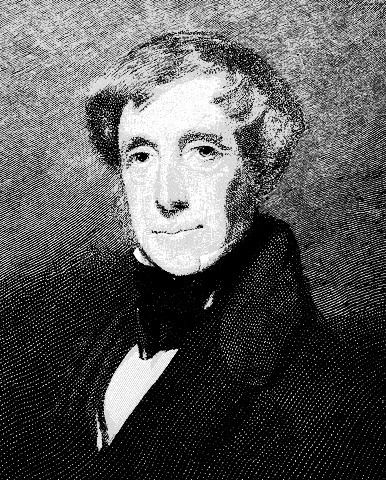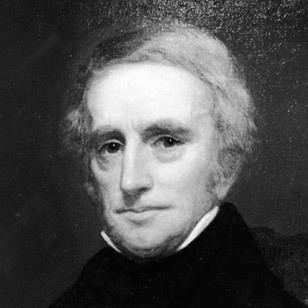Signature Name Clement Moore | Role Writer Children Mary C. Moore Ogden | |
 | ||
Born July 15, 1779New York City, New York, United States ( 1779-07-15 ) Died July 10, 1863, Newport, Rhode Island, United States Movies The Night Before Christmas, The Night Before Christmas: A Mouse Tale, 'Twas the Night Before Christmas Education Columbia College of Columbia University in the City of New York, Columbia University Books A Visit from St Nicholas, Night Before Christma, Pop‑up the Night Before C, The Night Before Christma, The Zombie Night Bef Similar Benjamin Moore (bishop), Thomas Nast, Charles Santore | ||
Author facts clement clarke moore vlogmas day 21
Clement Clarke Moore (July 15, 1779 – July 10, 1863) was a writer and American Professor of Oriental and Greek Literature, as well as Divinity and Biblical Learning, at the General Theological Seminary of the Protestant Episcopal Church, in New York City. The seminary was developed on land donated by Moore and it continues on this site at Ninth Avenue between 20th and 21st streets, in an area known as Chelsea Square. Moore's connection with the seminary continued for more than 25 years.
Contents
- Author facts clement clarke moore vlogmas day 21
- a visit from st nicholas by clement clarke moore poem
- Life and career
- Marriage and family
- Chelsea estate
- A Visit from St Nicholas
- Authorship controversy
- Legacy and honors
- References

Moore gained considerable wealth by subdividing and developing other parts of his large inherited estate in what became known as the residential neighborhood of Chelsea. Before this, the urbanized part of the city ended at Houston Street on Manhattan island. For 10 years, Moore also served as a board member of the New York Institution for the Blind.

He is credited and is most widely known as the author of the Christmas poem "A Visit from St. Nicholas", first published anonymously in 1823. It later became widely known as "'Twas the Night Before Christmas" and has been published in numerous illustrated versions in various languages. Scholars debate the identity of the author, calling on textual and handwriting analysis as well as other historical sources.

a visit from st nicholas by clement clarke moore poem
Life and career
Moore was born on July 15, 1779 in New York City to Bishop Benjamin Moore and Charity Clarke. His father headed the Episcopal Diocese of New York, which then covered the state. It was organized after the American Revolutionary War when the church became independent of the Church of England. During the uncertain years of the war, when Loyalists associated with what was known as King's College left for Canada, Moore became president of the renamed Columbia College (now Columbia University). He served twice in this position.
Moore's mother was a daughter of Major Thomas Clarke, an English officer who stayed in the colony after fighting in the French and Indian War. He owned the large Manhattan estate "Chelsea," then in the country north of the developed areas of the city. As a girl, Moore's mother Charity Clarke wrote letters to her English cousins. Preserved at Columbia University, these show her disdain for the policies of the British monarchy and her growing sense of patriotism in pre-Revolutionary days.
Moore was born at Chelsea, at his mother's family estate. The Moores established their own residence in Elmhurst, Queens. After his grandfather Clarke's and mother's deaths, Moore inherited the Chelsea estate. He earned great wealth by subdividing and developing it in the 19th century. Moore graduated from Columbia College (1798), where he earned both his B.A. and his M.A..
One of Moore's earliest known works was an anonymous pro-Federalist pamphlet published prior to the 1804 presidential election, attacking the religious views of Thomas Jefferson (the incumbent president and Democratic-Republican candidate). His polemic, titled in full "Observations upon Certain Passages in Mr. Jefferson's Notes on Virginia, which Appear to Have a Tendency to Subvert Religion, and Establish a False Philosophy", focused on Jefferson's Notes on the State of Virginia (1785). Moore concluded this work was an "instrument of infidelity".
In 1820, Moore helped Trinity Church organize a new parish church, St. Luke in the Fields, on Hudson Street. He later gave 66 tracts of land – the apple orchard from his inherited Chelsea estate– to the Episcopal Diocese of New York to be the site of the General Theological Seminary.
Based likely on this donation, and on the publication of his Hebrew and English Lexicon in 1809, Moore was appointed as professor of Biblical learning at the Seminary. He held this post until 1850. Moore owned several slaves during his lifetime, as was customary of many in his class. He opposed the abolition of slavery. New York State passed a gradual abolition law in 1799 after the Revolution; it freed the last slaves in the state in 1827.
After the seminary was built, Moore began the residential development of his Chelsea estate in the 1820s with the help of James N. Wells, dividing it into lots along Ninth Avenue and selling them to well-heeled New Yorkers. Covenants in the deeds of sale created a planned neighborhood, specifying what could be built on the land as well as architectural details of the buildings. Stables, manufacturing and commercial uses were forbidden in the development.
From 1840 to 1850, Moore also served as a board member of the New York Institution for the Blind at 34th Street and Ninth Avenue (now the New York Institute for Special Education). He published a collection of poems (1844).
Upon his death in 1863 at his summer residence on Catherine Street in Newport, Rhode Island, Moore's funeral was held in Trinity Church, Newport, where he had owned a pew. His body was returned to New York for burial in the cemetery at St. Luke in the Fields. On November 29, 1899, his body was reinterred in Trinity Church Cemetery in New York.
Marriage and family
Moore married Catharine Elizabeth Taylor, who was of English and Dutch descent. She was a direct descendant of the Dutch Van Cortlandt family, once the major landholders in the lower Hudson Valley of New York. The Moores had several living descendants, including members of the Ogden family. In 1855, Mary C. Moore Ogden, one of the Moores' married daughters, painted "illuminations" to go with the first color edition of her father's celebrated verse about Christmas.
Chelsea estate
Moore's estate, named Chelsea, was on the west side of the island of Manhattan above Houston Street, where the developed city ended at the time. It was mostly open countryside before the 1820s. It had been owned by his maternal grandfather Maj. Thomas Clarke, a retired British veteran of the French and Indian War (the North American front of the Seven Years' War). Clarke named his house for the Royal Hospital Chelsea in London that served war veterans. The estate was later inherited by his daughter and Moore's mother, Charity Clarke Moore, and ultimately by grandson Clement Moore and his family.
When the government of New York City laid down the street grid in Manhattan, based on the Commissioner's Plan of 1811, the new Ninth Avenue was projected to go through the middle of the Chelsea estate. Moore wrote and published a pamphlet calling on other "Proprietors of Real Estate" to fight the continued development of the city, which then ended at Houston Street. He thought it was a conspiracy designed to increase political patronage and appease the city's working class. He also decried having to pay taxes for public works such as creating new streets, which he called "a tyranny no monarch in Europe would dare to exercise."
Despite his protests, Moore eventually began to develop Chelsea, generating high revenues for himself by dividing it into lots along Ninth Avenue and selling them to well-heeled New Yorkers. He donated a large block of land to the Episcopal diocese for construction of a seminary, giving them an apple orchard consisting of 66 tracts. Construction began in 1827 for the General Theological Seminary. Based on his knowledge of Hebrew, Moore was appointed as its first professor of Oriental Languages, serving until 1850.
The Seminary continues to operate on the same site, taking up most of the block between 20th and 21st streets and Ninth and Tenth avenues. Ten years later, Moore also gave land on Ninth and 20th Street, east of the avenue, to the diocese for construction of St. Peter's Episcopal Church. The contemporary Manhattan neighborhood is known as Chelsea after his estate.
A Visit from St. Nicholas
This poem, "arguably the best-known verses ever written by an American", was first published anonymously in the Troy (NY) Sentinel on December 23, 1823. It was sent to the paper by a friend of Moore. It was reprinted frequently thereafter and published as a small book in illustrated versions.
It was not until 1837, in The New-York Book of Poetry (edited by Charles Fenno Hoffmann), that the poem was first attributed in print to Moore. Moore claimed authorship by including it in his Poems, an 1844 anthology of his works. His children, for whom he had originally written the piece, encouraged this publication. At first Moore had not wished to be connected with the popular verse, given his public reputation as a professor of ancient languages. By then, the original publisher and at least seven others had already acknowledged him as author. Moore was said to have written the poem while visiting his cousin, Mary McVicker, at Constable Hall, in what is now known as Constableville, New York.
Authorship controversy
Scholars have debated whether Moore was the author of this poem. Professor Donald Foster used textual content analysis and external evidence to argue that Moore could not have been the author. Foster believes that Major Henry Livingston, Jr., a New Yorker with Dutch and Scottish roots, should be considered the chief candidate for authorship. This view was long espoused by the Livingston family. Livingston was distantly related to Moore's wife.
Foster's claim, however, has been countered by document dealer and historian Seth Kaller, who once owned one of Moore's original manuscripts of the poem. Kaller has offered a point-by-point rebuttal of both Foster's linguistic analysis and external findings, buttressed by the work of autograph expert James Lowe and Dr. Joe Nickell, author of Pen, Ink and Evidence.
There is no proof that Livingston himself ever claimed authorship, nor has any record ever been found of any printing of the poem with Livingston's name attached to it. But, according to the original copy of the poem that was sent to The Sentinel, the names of Santa's last two reindeer were Dunder and Blixem, instead of Donder (later Donner) and Blitzen, as printed. The changes in spelling are attributed to a printing error and/or correcting Moore's spelling inaccuracies, as he did not speak Dutch.
In 2016, the matter was further discussed by MacDonald P. Jackson, an emeritus professor of English at the University of Auckland, a fellow of the Royal Society of New Zealand and an expert in authorship attribution using statistical techniques. He evaluated every argument using modern computational stylistics, including one never used before - statistical analysis of phonemes - and found in every test that Livingston was the more likely author.
